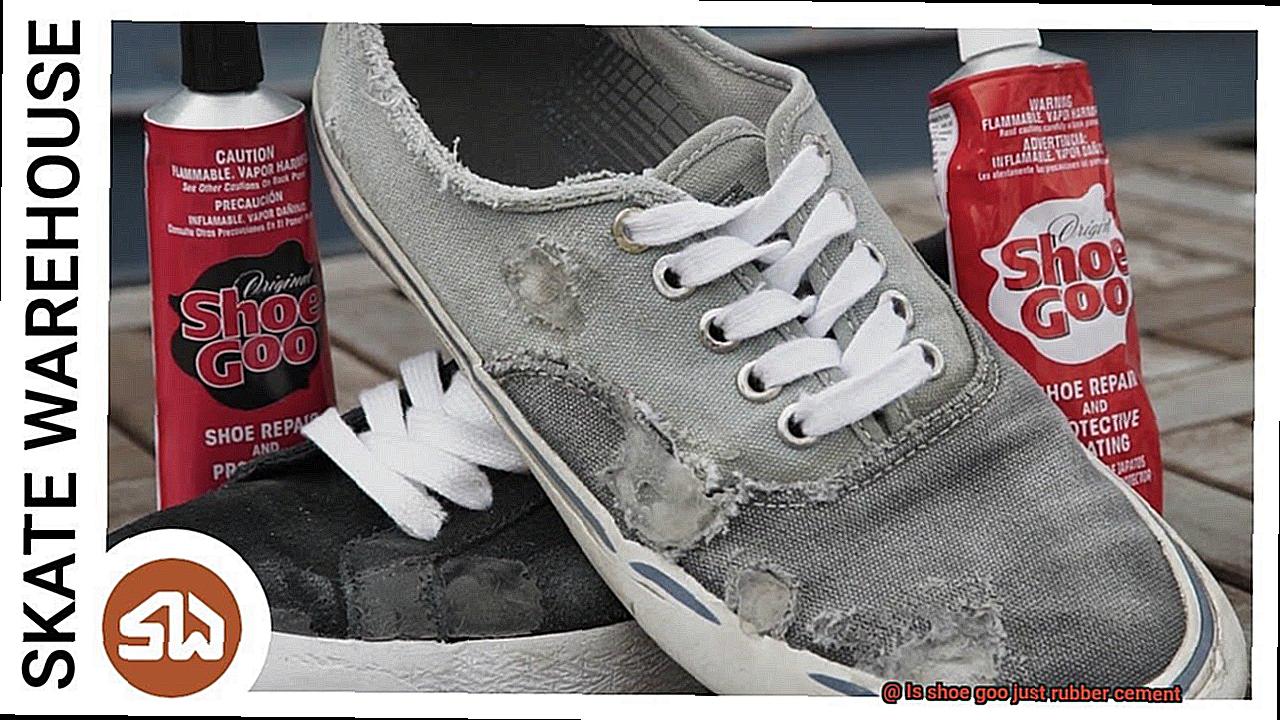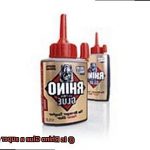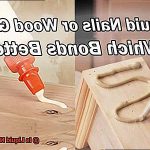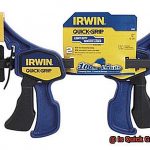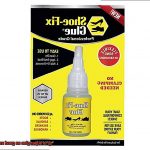Ever found yourself staring at a tube of Shoe Goo, wondering what this magical concoction really is? Whether you’re a sneakerhead, a sports fanatic, or just someone desperately trying to save your beloved shoes, chances are you’ve encountered this sticky savior.
But let’s get real for a moment – is shoe goo simply rubber cement in disguise? Well, my friend, prepare to have your mind blown as we embark on a journey to uncover the truth about Shoe Goo.
We’ll explore its extraordinary properties and compare them to the run-of-the-mill rubber cement you thought you knew.
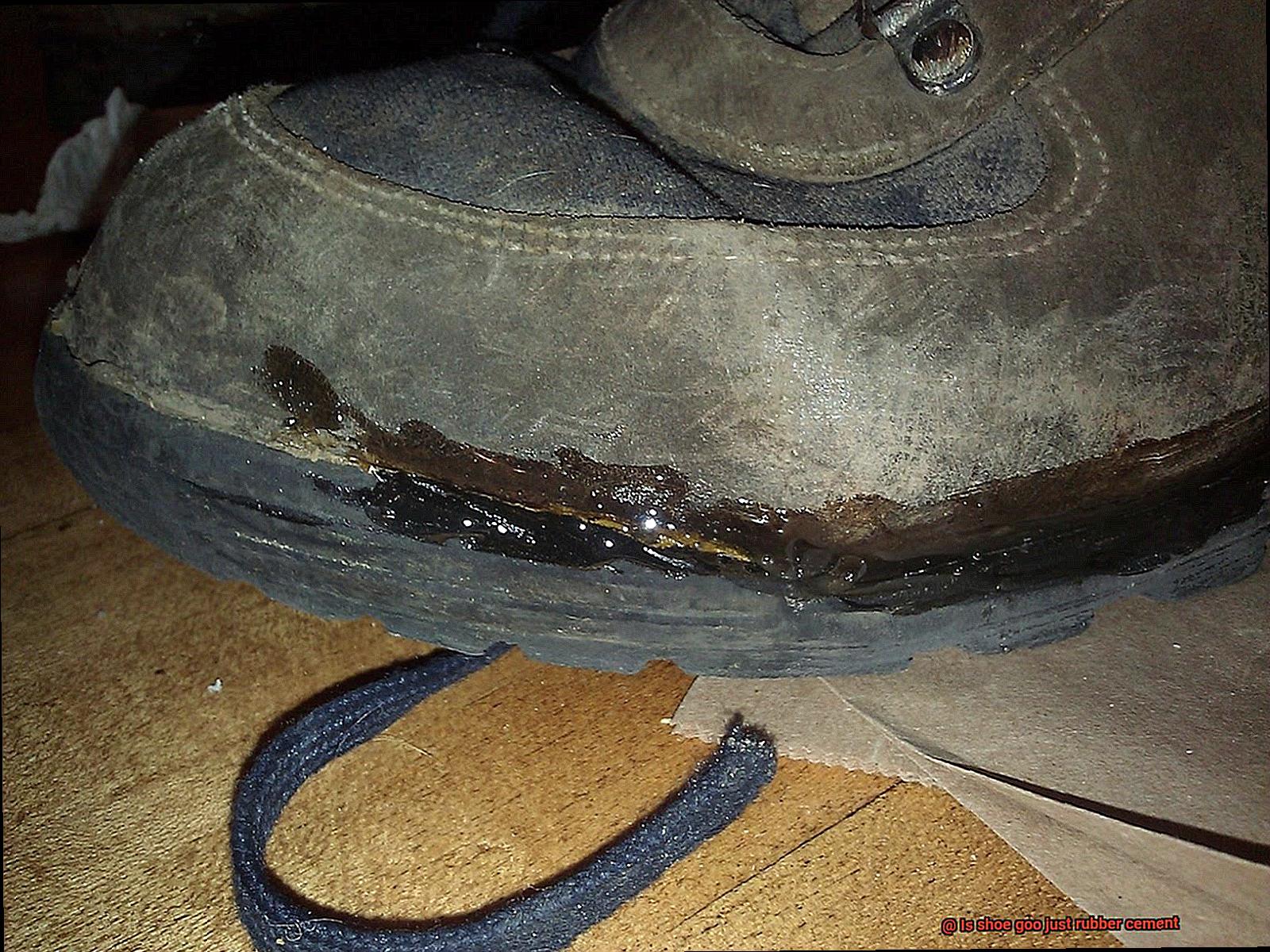
Buckle up and get ready to witness the hidden potential of Shoe Goo in the world of shoe repair and beyond.
Composition of Shoe Goo and Rubber Cement
Contents
Repairing and bonding shoes requires the use of effective adhesives, such as Shoe Goo and rubber cement. While these two products may seem similar at first glance, they possess distinct compositions that make them suitable for different purposes. In this article, we will delve into the composition of Shoe Goo and rubber cement, shedding light on their unique properties and applications.
Shoe Goo: A Strong and Flexible Bonding Agent
Shoe Goo is a specialized adhesive designed explicitly for shoe repair and protection. Its composition revolves around a key ingredient called polyurethane – a polymer resin known for its exceptional adhesive properties. This resin imparts the strength and flexibility necessary to withstand the demands of walking or running.
In addition to polyurethane, Shoe Goo contains various additives such as solvents, fillers, and curing agents. These components work in harmony to enhance adhesion, durability, and drying time. The solvents aid in even distribution of the adhesive, while the fillers amplify its thickness, enabling it to fill gaps and create a robust bond. The curing agents ensure complete drying and curing over time.
Rubber Cement: A Temporary Bonding Solution
On the other hand, rubber cement primarily comprises natural or synthetic rubber polymers dissolved in a solvent. This adhesive is commonly used for temporary bonding purposes, such as attaching paper or lightweight materials together. Its thin consistency facilitates easy application and spreading.
Unlike Shoe Goo, rubber cement is not formulated for long-term bonding. It creates a relatively weak bond that can be easily undone or removed when necessary. Due to its composition, it lacks the strength and flexibility required for withstanding heavy use or movement.
Comparing Drying Time and Flexibility:
One significant disparity between Shoe Goo and rubber cement lies in their drying time. Shoe Goo generally takes longer to dry and fully cure compared to rubber cement. This is attributed to the additional curing agents present in Shoe Goo, ensuring a robust and durable bond once the adhesive has thoroughly dried.
Furthermore, Shoe Goo offers superior flexibility upon curing, making it ideal for shoe repairs involving bending and stretching. Conversely, rubber cement may not provide the same level of flexibility due to its composition.
Conclusion:
To summarize, Shoe Goo and rubber cement are commonly used adhesive products for repairing and bonding shoes. While they serve similar purposes, their compositions differ significantly. Shoe Goo is a polyurethane-based adhesive that delivers a strong and flexible bond, making it suitable for enduring shoe repairs. Rubber cement, on the other hand, primarily consists of rubber polymers dissolved in a solvent, producing a weaker bond more suitable for temporary applications.
Intended Use of Shoe Goo and Rubber Cement
Let’s start with Shoe Goo, the superhero adhesive tailor-made for shoe repairs. Its robust and flexible bond makes it perfect for fixing all kinds of shoe mishaps. From patching up holes in your prized sneakers to reattaching loose heels, Shoe Goo has got your back.
It can adhere to a variety of materials commonly found in footwear, like leather, rubber, fabric, and vinyl.
So, no matter what shoe emergency you’re facing, Shoe Goo is here to save the day with its miraculous bonding powers.
Now, let’s turn our attention to rubber cement, the adhesive sidekick with its own unique set of powers. While rubber cement may not possess the same super strength as Shoe Goo, it has a different trick up its sleeve.
Rubber cement is renowned for its repositionable nature, making it perfect for temporary bonding. If you’re engaged in a craft project or creating artwork that requires flexibility and easy removal, rubber cement is your glue of choice.
Its tacky consistency allows you to stick things together and then effortlessly remove or reposition them without leaving behind a sticky mess.
It’s crucial to remember that each adhesive has its intended use. Using Shoe Goo on lightweight materials like paper may result in an overly strong and inflexible bond. Similarly, employing rubber cement to repair shoes may not deliver the durability necessary for long-term use. Thus, it’s crucial to select the right adhesive for the job at hand to ensure successful results.
Differences in Bonding Properties
The world of adhesives is anything but simple. Countless types of glues exist, each with unique properties and uses that set them apart. Two popular adhesives, shoe goo and rubber cement, exhibit differences in bonding properties that make them suitable for specific applications.
Rubber cement, made from rubber latex and a solvent like acetone or hexane, is commonly used for temporary bonds or projects requiring repositioning. It offers flexibility, which allows for easy peeling off or repositioning without leaving residue. However, this flexibility comes at a cost. Over time, rubber cement becomes brittle and may crack or break when subjected to constant movement.
Shoe goo, on the other hand, is an adhesive superhero for shoes. Specifically designed for repairing and bonding shoe materials like rubber, leather, vinyl, and canvas, shoe goo forms a strong and durable bond that withstands bending and flexing movements. Unlike rubber cement, shoe goo remains flexible even after drying, ensuring it can handle daily wear and tear.
Drying time is another differentiating factor. Rubber cement dries quickly within minutes, allowing immediate repositioning or adjustment of bonded materials. Shoe goo, however, may take longer to dry completely. It often requires several hours or overnight curing time to achieve maximum strength.
Water resistance is yet another distinguishing characteristic. Shoe goo excels in this area, maintaining its adhesive properties even when exposed to water and moisture. It’s ideal for repairing shoes that encounter wet conditions. Rubber cement, on the other hand, may lose its adhesive strength when exposed to moisture.
Consistency also sets these adhesives apart. Shoe goo has a thicker consistency compared to rubber cement. This thickness facilitates better gap-filling capabilities and creates a stronger bond between different materials.
Lastly, the intended use of these adhesives differentiates them further. While rubber cement is versatile for various temporary bonding applications, shoe goo is specifically formulated for shoe repairs. Its unique properties make it suitable for fixing and reinforcing footwear components subjected to constant stress and abrasion.
Difference in Consistency
When it comes to adhesives, the difference in consistency between shoe goo and rubber cement is significant. Picture this: you’re faced with a broken sole or a tear in your favorite pair of shoes. These two popular options may seem similar, but their consistency sets them apart like night and day.
Let’s dive into the world of shoe goo first. This superhero of adhesives boasts a thick and gooey consistency that’s ready to tackle any gaps or cracks on the surface of your shoes. It’s like a sticky warrior, clinging effortlessly to materials like leather, rubber, fabric, and even plastic. So whether you need to fix a loose sole or patch up a tear in your most cherished sneakers, shoe goo has got your back.
Meanwhile, rubber cement takes a completely different approach. This liquid adhesive flows easily and spreads smoothly on surfaces, thanks to its thin consistency. It’s the precision tool you need for delicate repair jobs or when you need to stick something in just the right spot. With rubber cement, accuracy and control are at your fingertips.
The drying time of these adhesives also varies depending on their thickness. Shoe goo takes longer to dry because of its thick texture. It needs time to cure and harden properly before it can provide that strong bond you’re looking for.
On the flip side, rubber cement dries relatively quickly thanks to its thin consistency. No more waiting around for ages for your repair job to be complete.
Flexibility is another important factor to consider. Shoe goo remains flexible even after drying, which is crucial for repairing shoes that need to bend and flex during use. Its thick consistency absorbs impact and resists cracking or peeling. Rubber cement, however, may harden and become more rigid after drying, limiting its suitability for applications that require flexibility.
Application Techniques for Both Products

When it comes to applying glue, it’s not the flashiest topic, but it’s definitely an important one. Whether you’re a DIY enthusiast or just someone trying to fix a beloved pair of shoes, having the right adhesive and knowing how to apply it can make all the difference. Today, we’re going to dive into the application techniques for two popular glues: Shoe Goo and rubber cement.
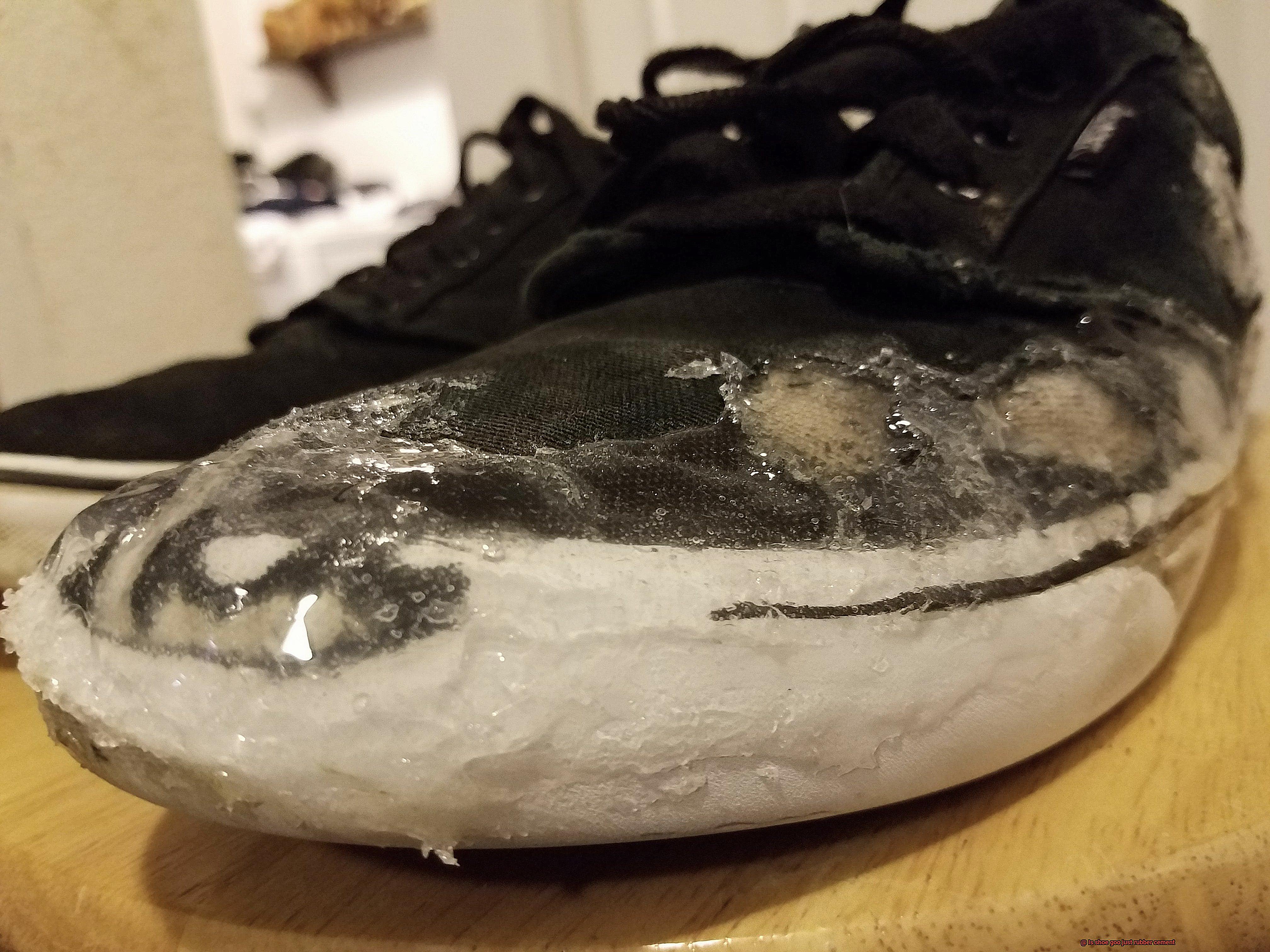
Let’s start with Shoe Goo. This versatile adhesive is a shoe lover’s best friend. It’s perfect for repairing and protecting your favorite kicks. Before applying Shoe Goo, you’ll want to make sure the surface is squeaky clean. A little soap and water or rubbing alcohol will do the trick. Once your shoes are prepped and ready, it’s time to get gooey.
For small repairs, a thin layer of Shoe Goo will do the job. Use a toothpick or a small brush to spread it evenly over the damaged area. If you’re dealing with a larger repair or reinforcing a weak spot, go ahead and lay it on thicker. Just make sure to cover the entire area that needs attention. To get a smooth finish, you can wet your finger with water or rubbing alcohol and gently smoothen the applied Shoe Goo. This will help in creating a seamless and neat repair.
Now, let’s talk about rubber cement. This glue is a crafty person’s dream. It’s great for all sorts of projects, from paper crafts to fabric art. When using rubber cement, cleanliness is key. Make sure both surfaces are clean and dry before getting started. Once everything is in order, apply a thin layer of rubber cement using a brush or spreader. Spread it evenly and cover the entire area where you want your materials to bond.
Here’s where things get interesting – you’ll want to wait for the rubber cement to dry partially. It should be tacky to touch but not completely dry. This waiting period allows the adhesive to reach its optimal bonding strength. Once the rubber cement is tacky, press your materials together firmly and hold them in place for a few seconds to allow the adhesive to work its magic. If you need to reposition or remove the bonded materials, gently peel them apart while the rubber cement is still tacky. This will ensure easier removal without damaging the surfaces.
Now that you know the basics, let’s compare and contrast the application techniques for both Shoe Goo and rubber cement. The biggest difference lies in their intended uses. Shoe Goo is designed specifically for shoes, so it’s thick and gooey, perfect for filling gaps and cracks. On the other hand, rubber cement is more fluid and precise, making it ideal for delicate crafts and light materials.
Advantages of Using Shoe Goo
When it comes to fixing and creating things, glue might not be the most glamorous subject, but it is an essential tool. When it comes to repairing shoes, Shoe Goo stands out as a versatile and reliable adhesive. In this blog post, we will explore the advantages of using Shoe Goo and why it should be your go-to glue for all your shoe repair needs.
Versatility:
Shoe Goo is incredibly versatile, making it suitable for a wide range of materials. Unlike rubber cement, which is mainly used for rubber materials, Shoe Goo can bond fabric, leather, vinyl, and even plastic. This makes it an ideal adhesive not only for repairing shoes but also for fixing other items like handbags, backpacks, and automotive parts. With Shoe Goo in your arsenal, you can tackle various repair projects without needing multiple types of glue.
Strength and Durability:
One of the standout features of Shoe Goo is its exceptional strength and durability. Once cured, it forms a tough and flexible bond that can withstand repeated stress and strain. Whether you’re walking, running, jumping, or engaging in outdoor activities like hiking or skateboarding, Shoe Goo will keep your repaired shoes intact. You can trust that the repairs made with Shoe Goo will last longer than those made with other adhesives.
Waterproofing Abilities:
Another advantage of Shoe Goo is its ability to create a waterproof seal. By applying Shoe Goo to your shoes or other items, you can create a protective barrier that prevents water from seeping through. This is particularly valuable for outdoor enthusiasts who need their footwear to be resistant to moisture.
It also helps extend the lifespan of repaired shoes by preventing water damage. With Shoe Goo, you can confidently take on wet terrains without worrying about ruining your shoes.
Cost-Effectiveness:
Repairing your shoes with Shoe Goo is a cost-effective solution compared to buying new ones or taking them to professional repair shops. With just a small tube of Shoe Goo, you can fix multiple pairs of shoes, saving you money in the long run. Additionally, the ease of application allows individuals to perform repairs themselves without the need for expensive tools or equipment. Say goodbye to expensive shoe repairs and hello to a budget-friendly solution with Shoe Goo.
Quick-Drying Properties:
Nobody wants to wait around for hours or days for glue to dry. With Shoe Goo, you won’t have to. This adhesive has a relatively quick drying time, typically within 24 hours, depending on the thickness and temperature conditions. This means you can get back to using your repaired shoes in no time. Say goodbye to waiting and hello to the convenience of Shoe Goo’s fast-drying properties.
Disadvantages of Using Rubber Cement
When it comes to glues and adhesives, the options are seemingly endless. But before you reach for that bottle of rubber cement, it’s important to consider the disadvantages that come along with it.
First and foremost, rubber cement is notorious for its messy nature. With its thin consistency, this adhesive has a tendency to spill and drip onto surfaces, leaving behind stubborn stains that are anything but easy to remove. If you’re looking for a clean and hassle-free experience, rubber cement might not be your best bet.
Aside from its messiness, rubber cement also comes with a powerful odor. The volatile solvents present in this adhesive emit an unpleasant smell that can be quite overwhelming, especially if you’re working with it for an extended period. Headaches, dizziness, and respiratory issues can all be potential side effects of prolonged exposure to this pungent glue.
In terms of convenience, rubber cement falls short when it comes to drying time. Unlike other adhesives, it takes significantly longer to dry. This can be frustrating if you’re working on a project that requires quick results or if you’re juggling multiple items simultaneously.
But the disadvantages don’t end there. Over time, rubber cement tends to become brittle and lose its adhesive properties. This means that the bond it initially creates may weaken or break, necessitating repairs or replacements down the line. If you’re looking for a long-lasting solution, it may be wise to explore other adhesive options.
Furthermore, rubber cement is not compatible with all materials. Delicate fabrics, plastics, or certain types of paper can be easily damaged by this adhesive. It’s always crucial to test the glue on a small, inconspicuous area before applying it more widely to ensure it won’t cause any harm.
Applying rubber cement requires a steady hand and careful precision. It is often used with a brush or spreader, which can be difficult to control. This can result in uneven applications or the unintentional spread of excess glue, leading to messy and unsatisfactory results.
And let’s not forget about its lack of waterproofing capabilities. If exposed to moisture or high humidity, rubber cement can lose its adhesive properties and fail to provide a strong bond. This limitation restricts its use in outdoor or water-exposed projects.
Last but not least, proper storage is crucial for rubber cement. If not stored correctly, it can dry out or evaporate, rendering the adhesive useless for future use. So, if you’re someone who tends to forget to seal containers tightly, you might want to consider other glue options that are more forgiving in this aspect.
Conclusion
In conclusion, Shoe Goo is far from being just another rubber cement impostor. These two adhesives may share a purpose, but their compositions and qualities diverge significantly. Shoe Goo is specifically designed for shoe repair and protection, boasting a formulation centered around the mighty polyurethane resin.
This powerful resin grants it the strength and flexibility needed to endure the rigors of walking or running.
Shoe Goo goes above and beyond with its additional additives. Solvents, fillers, and curing agents join forces to elevate its adhesion, durability, and drying time. The solvents ensure an even distribution of the adhesive, while the fillers amplify its thickness for seamless gap filling.
And let’s not forget about those curing agents – they guarantee complete drying and curing over time.
On the flip side, rubber cement relies on natural or synthetic rubber polymers dissolved in a solvent. It may find temporary bonding applications useful, but it lacks the resilience required for long-term use or movement.
What sets Shoe Goo apart even further is its remarkable flexibility once it has cured. Rubber cement simply can’t compete in this department. Plus, Shoe Goo takes a bit longer to dry due to those extra special curing agents present in its formula.
When it comes to application techniques, Shoe Goo reigns supreme for shoe repairs. Simply apply a thin layer evenly over the damaged area – easy peasy. Rubber cement demands clean and dry surfaces before applying a thin layer that becomes tacky before bonding materials together.
To sum it up, both Shoe Goo and rubber cement have their merits as adhesives. However, their distinct compositions and properties make them suitable for different tasks.

